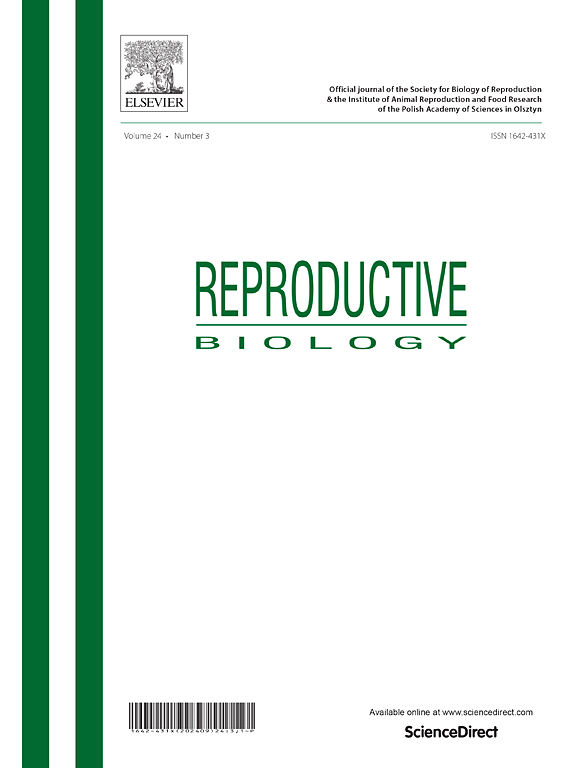Testis-specific gene C3ORF22/BC048671 is dispensable for spermiogenesis and male fertility
IF 2.5
3区 生物学
Q3 REPRODUCTIVE BIOLOGY
引用次数: 0
Abstract
Testicular tissue displays the most complex transcriptome across all tissues, with over 2000 genes exhibiting testis-enriched expression patterns. However, the functional ambiguity of such genes limits our understanding of spermatogenesis and male fertility. Here, we reanalyzed testicular gene expression profiles from patients with impaired spermatogenesis and identified that reduced expression of the testis-specific gene C3ORF22 was correlated with spermatogenic defects in humans. We showed that the murine ortholog BC048671 was predominant expressed in round spermatids, and its protein is present in spermatozoa. BC048671 knockout (KO) mice exhibited normal fertility, sperm morphology, and sperm motility. Intriguingly, RNA-Seq analysis revealed that BC048671 was the most markedly dysregulated gene in KO testes. Although proteomic analysis reveals the down-regulated ADAM family members (e.g., ADAM28 and ADAM2) in BC048671-null sperm, expression of the key downstream effector ADAM3 remained unaffected. These findings indicate that BC048671/C3ORF22 exhibits functional redundancy in spermatozoa. Although C3ORF22 is dispensable for male fertility, we consider it essential to report such negative results to guide researchers to prioritize efforts toward genes critical for human fertility.
睾丸特异性基因C3ORF22/BC048671在精子发生和男性生育中是不可或缺的
睾丸组织在所有组织中表现出最复杂的转录组,有超过2000个基因表现出睾丸富集的表达模式。然而,这些基因的功能模糊限制了我们对精子发生和男性生育能力的理解。在这里,我们重新分析了精子发生受损患者的睾丸基因表达谱,发现睾丸特异性基因C3ORF22的表达减少与人类精子发生缺陷相关。我们发现小鼠同源基因BC048671在圆形精子中主要表达,其蛋白存在于精子中。BC048671基因敲除(KO)小鼠表现出正常的生育能力、精子形态和精子活力。有趣的是,RNA-Seq分析显示,BC048671是KO睾丸中最明显的失调基因。尽管蛋白质组学分析显示,在bc048671缺失的精子中,ADAM家族成员ADAM28和ADAM2下调,但关键的下游效应物ADAM3的表达未受影响。这些发现表明BC048671/C3ORF22在精子中表现出功能冗余。尽管C3ORF22在男性生育能力中是必不可少的,但我们认为报告这样的阴性结果对于指导研究人员优先考虑对人类生育能力至关重要的基因是必要的。
本文章由计算机程序翻译,如有差异,请以英文原文为准。
求助全文
约1分钟内获得全文
求助全文
来源期刊

Reproductive biology
生物-生殖生物学
CiteScore
3.90
自引率
0.00%
发文量
95
审稿时长
29 days
期刊介绍:
An official journal of the Society for Biology of Reproduction and the Institute of Animal Reproduction and Food Research of Polish Academy of Sciences in Olsztyn, Poland.
Reproductive Biology is an international, peer-reviewed journal covering all aspects of reproduction in vertebrates. The journal invites original research papers, short communications, review articles and commentaries dealing with reproductive physiology, endocrinology, immunology, molecular and cellular biology, receptor studies, animal breeding as well as andrology, embryology, infertility, assisted reproduction and contraception. Papers from both basic and clinical research will be considered.
 求助内容:
求助内容: 应助结果提醒方式:
应助结果提醒方式:


